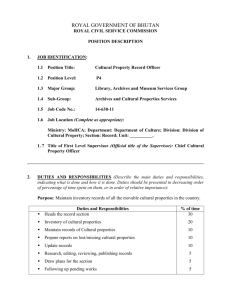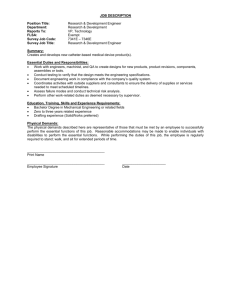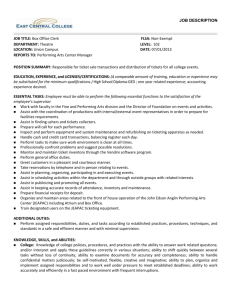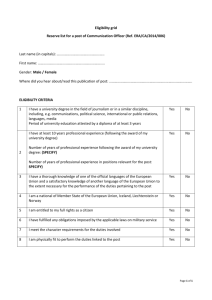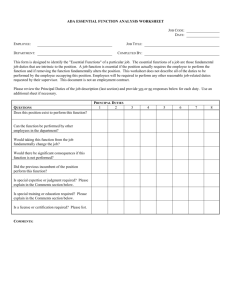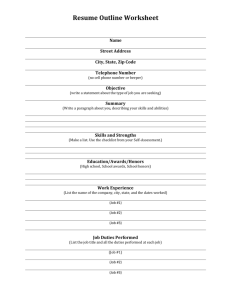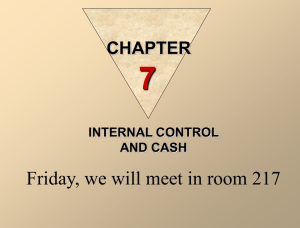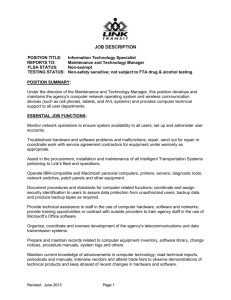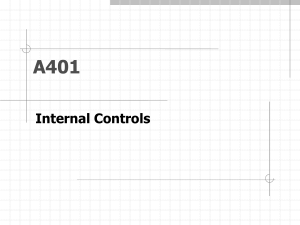ACCT3431, Ch 11a
advertisement
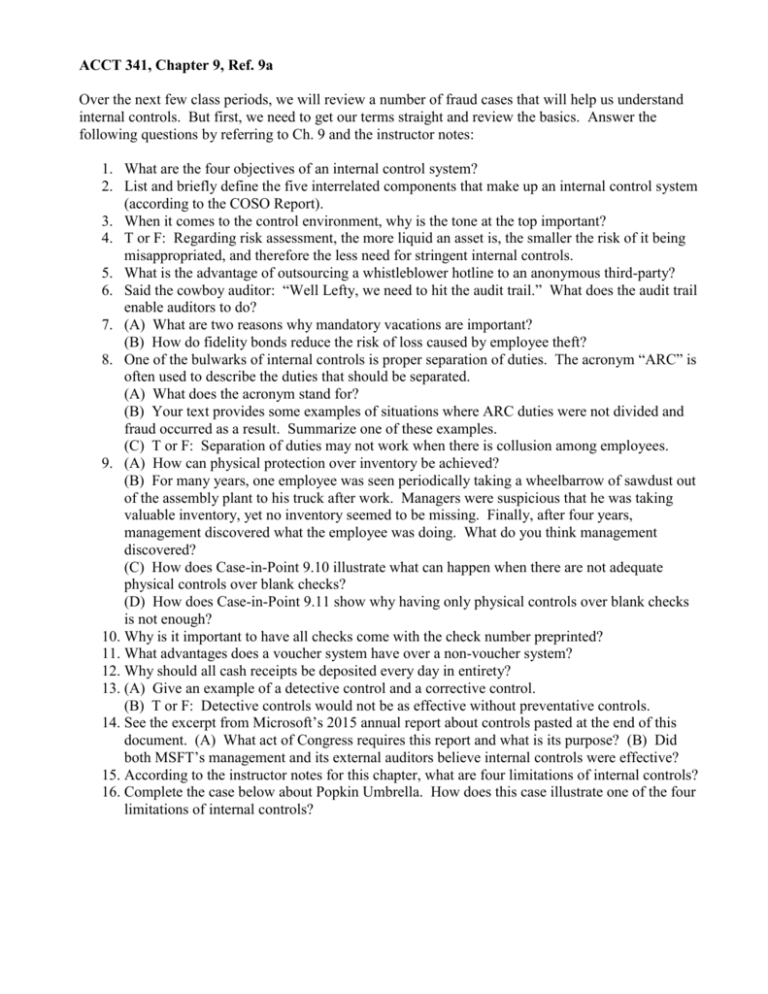
ACCT 341, Chapter 9, Ref. 9a Over the next few class periods, we will review a number of fraud cases that will help us understand internal controls. But first, we need to get our terms straight and review the basics. Answer the following questions by referring to Ch. 9 and the instructor notes: 1. What are the four objectives of an internal control system? 2. List and briefly define the five interrelated components that make up an internal control system (according to the COSO Report). 3. When it comes to the control environment, why is the tone at the top important? 4. T or F: Regarding risk assessment, the more liquid an asset is, the smaller the risk of it being misappropriated, and therefore the less need for stringent internal controls. 5. What is the advantage of outsourcing a whistleblower hotline to an anonymous third-party? 6. Said the cowboy auditor: “Well Lefty, we need to hit the audit trail.” What does the audit trail enable auditors to do? 7. (A) What are two reasons why mandatory vacations are important? (B) How do fidelity bonds reduce the risk of loss caused by employee theft? 8. One of the bulwarks of internal controls is proper separation of duties. The acronym “ARC” is often used to describe the duties that should be separated. (A) What does the acronym stand for? (B) Your text provides some examples of situations where ARC duties were not divided and fraud occurred as a result. Summarize one of these examples. (C) T or F: Separation of duties may not work when there is collusion among employees. 9. (A) How can physical protection over inventory be achieved? (B) For many years, one employee was seen periodically taking a wheelbarrow of sawdust out of the assembly plant to his truck after work. Managers were suspicious that he was taking valuable inventory, yet no inventory seemed to be missing. Finally, after four years, management discovered what the employee was doing. What do you think management discovered? (C) How does Case-in-Point 9.10 illustrate what can happen when there are not adequate physical controls over blank checks? (D) How does Case-in-Point 9.11 show why having only physical controls over blank checks is not enough? 10. Why is it important to have all checks come with the check number preprinted? 11. What advantages does a voucher system have over a non-voucher system? 12. Why should all cash receipts be deposited every day in entirety? 13. (A) Give an example of a detective control and a corrective control. (B) T or F: Detective controls would not be as effective without preventative controls. 14. See the excerpt from Microsoft’s 2015 annual report about controls pasted at the end of this document. (A) What act of Congress requires this report and what is its purpose? (B) Did both MSFT’s management and its external auditors believe internal controls were effective? 15. According to the instructor notes for this chapter, what are four limitations of internal controls? 16. Complete the case below about Popkin Umbrella. How does this case illustrate one of the four limitations of internal controls?


